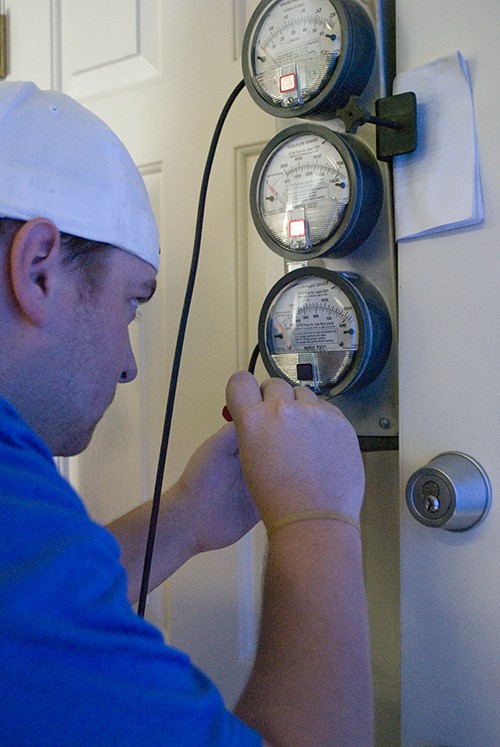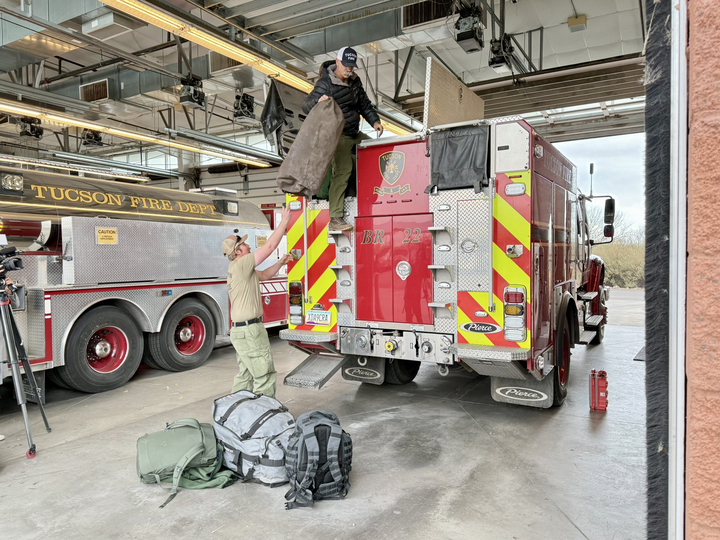The UA House Energy Doctor program is giving three Residence Life buildings a sustainability checkup.
The program consists of graduate and upper-division undergraduate architecture students who test buildings in order to prescribe how they can save energy and cut costs.
The doctors audited Maricopa Residence Hall, La Aldea graduate housing complex and Arizona-Sonora Residence Hall on March 30.
Assessing the buildings took three and a half hours. This was the first time the program had done simultaneous audits and the first time the program has audited buildings on the UA campus.
The doctors spent a lot of time studying the three building in detail before the audit.
“”Its one thing to look at it on paper or on the computer and it’s a completely different animal to go out and test them,”” said A.J. Mach, house energy doctor.
The doctors will give their recommendations to Residence Life on May 12, showing possible solutions and a breakdown of how much money various strategies would save.
For La Aldea, exterior lights are left on all night long causing energy to be wasted, Mach said.
Another possible recommendation will be to use lighter paint colors because the darker paint colors in La Aldea absorb more heat.
House Energy Doctor Justin Hernandez worked on Arizona-Sonora Residence Hall.
“”Residents on the south side are usually really hot during the summer and then ones one north side are really cold during the winter,”” Hernandez said. “”It’s just an issue with the mechanical system … there are individual controls that each resident has but the whole building as a whole … they can’t regulate one building from another because its all connected.””
Lighting is also left on in several areas, he said.
The mechanical system in La Aldea is not high efficiency, which causes the building to use more energy, according to Alan Roberts, house energy doctor.
“”If they upgrade that equipment they would see a decrease in their energy use,”” Roberts said. “”But you would have the upfront cost of purchasing all that equipment so there sometimes is a trade off and a balance there.””
There are less expensive solutions that would reduce the amount of heat the building takes on, said Roberts. One option is to create new window shadings to replace the current shadings that were not designed to cool the building.
“”In the end, a big part of it is up to the users,”” Mach said. “”If its cold inside, instead of just cranking the heater all the way up maybe you put on a sweater, and that might do the job. The residents they are not aware of what they’re using.””
Public education on sustainability would benefit dramatically, Mach said.
“”If you don’t pay, you don’t know what you’re doing,”” said House Energy Doctor Isabel Herrera. “”Even if you don’t care about energy, if you’re a homeowner you’re getting billed for it.””
“”People always care about money,”” Mach agreed.









